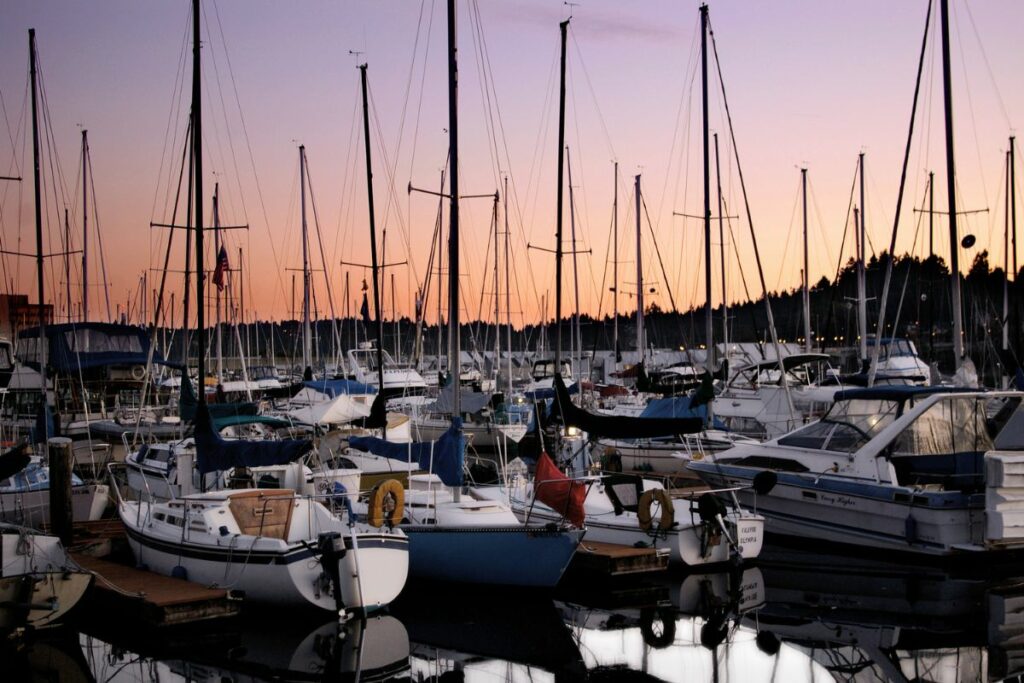Those new to seafaring may need to familiarize themselves with the sternlight. This is essentially the light at the boat’s stern, otherwise known as the rear of the boat.
While you might not think it would be challenging to rear-end a boat, it could still happen without you realizing it.
That’s why we’re here to tell you everything you need to know about your boat’s sternlight.
There are three distinct colors available on your boat, white, green, and red. Your sternlight is white, and so are your masthead lights.
However, your port light is red, and the starboard light is green. To narrow it down, your port light is on the left side of your boat, while your starboard is on the right.
Now, let’s go into more detail about your sternlight, its white color, and why it’s essential to have your lights working correctly.
What Visibility Requirements Does A Sternlight Need?
Your sternlight has to be white, and it needs to cover a 135-degree angle behind the boat. You’ll find the sternlight as close to the rear of your boat as possible, and it helps other sailors be alert to your boat’s presence.
Other sailors need to know where you are so they don’t crash. All of your navigation lights need to be on from sunset to sundown or when you have little visibility.
So, if it’s foggy or a storm is about to start, make sure you have all your lights on.
All sailors need to be able to see your sternlight too. Legally, another sailor should be able to see it from 2 nautical miles away. For another measurement, that means your sternlight should be visible from 2.3 miles or 3.7 kilometers out.
What Visibility Requirements Does A Masthead Light Need?
As we’re talking about sternlights, we should go into more depth about the other lights available on your boat. Our other white light is the masthead light, which needs to illuminate 225 degrees ahead of the boat.
The masthead lights need to face forward and should be at least a meter above your colored sidelights. However, if your boat is less than 12 meters in length, your masthead light should be 2.5 meters above your sidelights.
Using the masthead lights combined with your sternlight, you’ll find your boat is visible from all angles at 360 degrees.
Like with your sternlight, they need to be visible from at least two nautical miles away; however, this is only if your boat is under 12 meters long. If your boat is longer than 12 meters, your masthead lights need to be visible from 3 nautical miles away.
What Visibility Requirements Do Your Sidelights Need?
While colored sidelights are optional for any boats smaller than 7 meters long, they essentially work as indicators. Your sidelights are positioned near the front of the boat at the prow.
Using the sidelights, other sailors can determine the direction you’re sailing in so they can avoid crashing into you.
Your sidelights need to be visible from at least one nautical mile away but should be at least two nautical miles away if they are over 12 meters long.
What Sort Of Lights Are Needed For Smaller Boats?

We’ve mentioned that sidelights are optional for boats that are smaller than 7 meters in length. Not all small boats can have a masthead and a sternlight. Instead, they are legally expected to have an all-around light visible from 360 degrees.
This light should be placed in the same place where your masthead light would go, which would be roughly 39 inches above your sidelights if they would be.
However, while all short powerboats or sailboats will need an all-around white light with optional colored sidelights, there are some exceptions to the rule. On very small boats, you can use a torch or a flashlight instead, as long as it remains visible from 360 degrees.
What Kind Of Lights Are Needed For Other Boats?
For other boats, such as powerboats up to 12 meters in length, you’ll need to invest in a white all-around light.
This all-around light needs to be visible from 2 nautical miles away, and you need to have a pair of red and green sidelights to be seen from a nautical mile away.
When placing your all-around light, it must be at least 39 inches above your sidelights.
Powerboats that have a longer length of up to 20 meters need separate mastheads and sternlight.
The masthead needs to be seen from 3 nautical miles away, while the sternlight only needs to be visible from 2 nautical miles, much like the colored sidelights.
However, your masthead light must also be 2.4 meters above your boat’s gunnel.
Likewise, if you have a sailboat that’s up to 20 meters in length, you’ll need to have a white sternlight that can be seen from 2 nautical miles away.
Your colored sidelights need to be visible from 1 nautical mile out, and you can also use independent white, red, and green lights or a tricolor light in their place.
If a sailboat uses a tricolor light, it needs to shine in the appropriate direction, and it can’t be displayed at the same time as your usual sidelights.
Your tricolor light should also indicate the boat is sailing but not using power, so it can’t be used if your sailboat is using its motor, and it needs to be positioned where your masthead light would be.
Generally, all boats that are over 20 meters in length need visible masthead light, sternlight, and colored sidelights, with the masthead visible from 5 nautical miles away.
However, sternlight and colored sidelights should only be visible from 2 nautical miles away.
Bottom Line
All boats that are under 50 meters in length need to have an all-around white light visible from 2 nautical miles away unless you’re anchored in a well-lit marina.
This way, all boats are visible while anchored, and no one will crash while leaving the marina.


